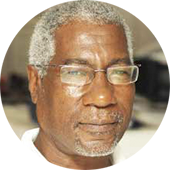
In these abnormal times, I normally reserve my coldest COVID criticisms for those who know better, but promote vaccine doubts through conspiracy theories to hide their own insecurities, preying on fears of those praying to understand how best to understand the different reasons being offered for not taking a vaccine that’s saving other people, by those telling them it can kill — or even turn them into robots.
I hold no grudge against anyone still unvaccinated, because not all are against vaccination, many simply not yet having been convinced it’s safe, or just haven’t made-up their minds on which vaccine to trust.
The choice here for 14 months was AstraZeneca, then Pfizer landed just after Delta, resulting in a welcome increase in the number of persons deciding to take the new vaccine.
That too fazed-away, however, after all who wanted the Pfizer jab took it.
But those who opted for Pfizer because they felt it was safer may now be having second thoughts…
According to an article published by TeleSUR on October 6, 2021: ‘The efficacy of Pfizer/BioNTech’s coronavirus vaccine declined from 88% to 47% six months after administration of the second dose.”
The Latin American news agency was quoting a study conducted by Pfizer and Kaiser Permanente and published Monday in the authoritative international medical journal The Lancet.
The specialists analyzed the electronic data of more than 3.4 million people between December 14, 2020 and August 8, 2021 and noted that the efficacy against the Delta variant was 93% during the first month after vaccination, but dropped to 53% four months later.
At the same time, the efficacy against other coronavirus strains was 97% during the first month and decreased to 67% four and five months later.
However, the efficacy of the drug against hospitalizations did not show the same negative trend and was over 90% for at least six months.
Such reports can more hinder than help, further confusing the undecided as they reject all they’ve been told about why one is/was supposedly ‘better’ than the other.
It’s also a grave fallacy to believe that ordinary people are simply always foolish, or less-bright than certificated officials — in this case doctors or nurses.
What’s being ignored, often with deadly consequences, is the fact that since everyone wants to live and nobody wants to die, it’s a matter of convincing those who want to live of how best not to die – in this case, by trusting a vaccine that will not absolutely prevent them from dying, but will give them much-more protection than if they don’t take it.
Virtually everyone here knows someone who’s died, been hospitalized or tested positive for COVID and the evidence is in every cemetery and hospital that it is the unvaccinated who are testing positive, getting hospitalized and dying.
Much has to do with how the message is transmitted…
If you simply tell an unvaccinated person ‘Don’t listen’ to whoever they’ve been listening to all along, why’d they automatically believe you?
It might be much more fruitful to engage without inviting disengagement and concentrating on providing factual information exposing the conspiracy theories, rumours, cooked-up and half-baked arguments.
Health authorities have a better chance by offering the unvarnished truth in palatable ways.
But there are also the psychological and cultural factors involved, the need to avoid planting unrealistic expectations — and the choice factor, which is based on confidence and trust.
Just as people rushed for Pfizer when AstraZeneca was the only choice, adding the Cuban and Chinese vaccines, for instance, can also result in a similar uptake in vaccinations.
For historical reasons that have nothing to with politics or ideology, the Cuban vaccines are being anxiously awaited across the Caribbean and the waiting list is most-likely longer than even the highest official estimates.
The five Cuban vaccines include one also for children and another to be inhaled (for those afraid of needles), while the Chinese also have a one for pregnant and lactating mothers (already available in Trinidad & Tobago).
Consider then, if all four vaccines are available here, with all their different specific characteristics?
And then there’s the matter of offering realistic expectations.
About a year ago, then Head of the COVID Command Center Tourism Minister Dominic Fedee grabbed-on fast to the first sign that Saint Lucia’s numbers were better than some Caribbean neighbours to prematurely claim we were ‘doing better’ handling COVID than the rest.
A year later, we’re hearing the same song: that a welcome decrease in the number of weekly deaths, hospitalizations and cases is enough to predict that we can ‘get over the fourth COVID wave’ by the end of November.
Likewise, we’re also hearing that ‘20% of the population’ has been vaccinated, when the real truth is that it’s 20% of the vaccinable population.
Using the going rate, the health authorities say they can achieve up to 40% vaccination by the end of 2021 and the other 30% by the end of the first quarter of 2022.
But in all cases the projections are prefaced or followed by the same proviso: ‘Providing all goes well…’ or “Barring unforeseen circumstances…”
It’s always okay to raise hopes when they’re down, but not in a case when our ‘going-down’ rate is happening at a time when everybody else’s is ‘going up’ – UK and USA, Europe and Brazil, Australia and Japan among those warning their populations not to drop the ball despite a few positive signs.
In such cases, my father’s old adage always sounded new – and would today…
He would always tell us: ‘If you’re feeling down, just look at the floor…’
In other words, there’s always hope — but it’s also always best ensure it’s based on whether that Hope is seen as possible — and not just heard as the name of a local motor boat from ‘days of old’ that very few Saint Lucians alive can even remember having seen…












